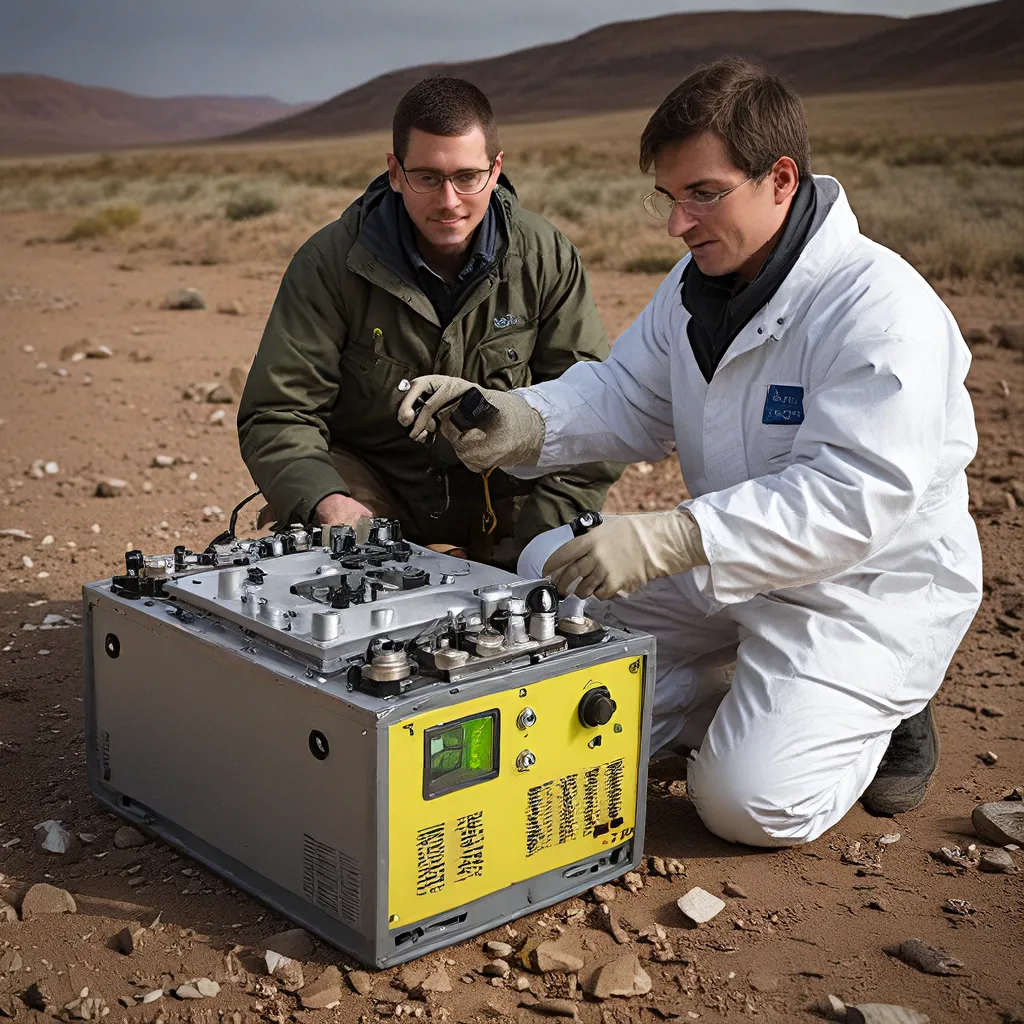
Powering the World, One Atom at a Time
Imagine a world where your phone, laptop, or even your car could run for decades without needing a single recharge. A world where the power grid is fueled by clean, sustainable energy that never runs out. Sound like science fiction? Well, my friends, the future is here, and it’s powered by the mighty atom.
Let me tell you a story. Back in 1964, the legendary Isaac Asimov penned an article for The New York Times, predicting what the world would look like 50 years later. Among his many wild ideas, he suggested that household appliances would be powered by long-lived, radioactive batteries. At the time, it must have sounded like the ravings of a madman. But you know what they say – sometimes the craziest ideas turn out to be the most brilliant.
Today, nuclear batteries are a reality, and they’re poised to revolutionize the way we power our world. These compact, long-lasting power sources are already being used in specialized applications, from deep-space probes to cardiac pacemakers. But the real excitement lies in their potential to transform our everyday lives.
The Quiet Revolution
I’ll admit, the idea of strapping a radioactive battery to your smartphone might seem a little… unnerving. After all, we’ve all heard the horror stories about nuclear disasters and the dangers of radiation. But trust me, the technology behind these “nuclear batteries” is far from your typical nuclear reactor.
Radioisotope Thermoelectric Generators (RTGs), for example, harness the natural decay of radioactive isotopes to generate electricity. They don’t rely on the volatile, fission-based process that powers nuclear power plants. Instead, they use the steady, controlled release of heat to drive a set of special thermoelectric junctions, producing a reliable, long-lasting current.
And it’s not just RTGs – there’s a whole family of nuclear battery technologies, each with its own unique advantages. Betavoltaic devices, for instance, generate electricity directly from the radioactive particles emitted by certain isotopes, without the need for any moving parts. That means they’re incredibly compact, durable, and safe to handle.
The best part? These nuclear batteries don’t rely on the same rare earth metals and environmentally-taxing mining processes that plague traditional lithium-ion batteries. In fact, some companies are even exploring ways to use radioactive waste from nuclear power plants as a fuel source. Talk about a sustainable solution!
Batteries Fit for a Superhero
Okay, let’s get down to brass tacks. What can these magical nuclear batteries actually do for us? Well, the possibilities are truly endless.
Imagine a world where your smartphone never needs charging. Where your laptop can run for decades without a single battery swap. Where your electric car can traverse the continent on a single “tank” of nuclear fuel. Plugnsnave Energy Products is already exploring how these revolutionary power sources could transform the world of energy-saving products.
But it’s not just about convenience – these nuclear batteries could also be a game-changer for the environment. No more toxic e-waste from dead batteries, no more reliance on fossil fuels, and no more worrying about the carbon footprint of our tech addiction. It’s a clean, sustainable power solution that could finally free us from the shackles of our energy-hungry lifestyle.
Of course, the skeptics will always be there, clinging to their fears of radiation and nuclear catastrophe. But the reality is, these nuclear batteries are orders of magnitude safer than the technology we use every day. The radioactive materials are carefully sealed and shielded, making them far less hazardous than, say, the lithium-ion batteries in your smartphone.
The Future is Bright (and Glowing)
So, what’s the catch? Well, the biggest obstacle right now is cost. Developing the specialized materials and manufacturing processes for these nuclear batteries isn’t cheap, at least not yet. But as the technology matures and scales up, I have no doubt that the price tag will come down to a level that’s accessible to the average consumer.
And let’s not forget the potential for innovation. As new advancements in nanotechnology and materials science continue to emerge, we might see even more compact, efficient, and cost-effective nuclear battery designs. Who knows, maybe in a few years, you’ll be able to power your entire house with a single, glowing cube the size of a paperclip.
The future is bright, my friends. And it’s powered by the very building blocks of the universe. So, are you ready to embrace the atomic age? Because I, for one, can’t wait to see what the next 50 years have in store.